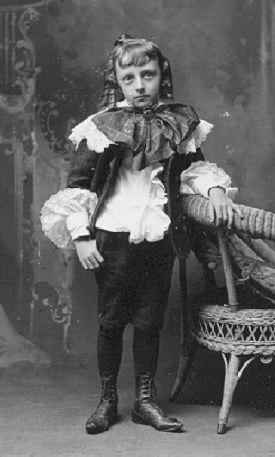
Figure 1.--Boys' wrist cuffs in the late-19th Century often matched the collars and grew to enormous sizes. .


Figure 1.--Boys' wrist cuffs in the late-19th Century often matched the collars and grew to enormous sizes. . |
Ruffled cuffs were worn with ruffled collars during the 17th abd darly 18th century. But this was not a sprcialized boys' fashion, but rather waht their fathers wore. Boys simoly wore scaled down fashions worn by their fathers.
Ruffled cuffs matching the collar were widely used for boys in Regency fashions during the late 18th and
early 19th centuries. The most common style using ruffled cuffs were:
skeleton suits,
tunics, but rarely smocks.
The dominate point of the shirt or blouse was the collar. Sometimes the style of the ruffled collar was replivated in the cuffs, but sometimes plains cuffs were used.
The ruffled collar was revived again in the late 19th century as part of the Fauntleroy craze. While the ruffled collar was the primary fashion element, many Fauntleroy blouses also had matchimg wrist cuff ruffles. This fashion continued into the early 20th century.
Boys' ruffled cuffs, like the matching ruffled collars, came in several different styles. The siz of the collar was ome major variabe, but there were many other differences as well.
The most significnt variable was the size of the ruflled cuffs. Some were quite small, just a hint of a ruffle. Others were quite large sometimes extending up the sleeve as far as the elbow.
Some ruffled collars not only fell back over the sleeve, but also might fall forward covering some of the hand. This was most common with 17th century fashions. The ruffled cuffs worn in the late 19th century with Fauntleroy suits genrally did not have cuffs with forward falls that covered the hand.
Most Fauntleroy suits were worn with ruffled rather than lace trim. This was in part because of the cost of true lace. Many ruffled collars were very large, in some cases extending even beyond the shoulders with cuff wrist trim to match. A lace collar and matching cuff trim of this size would have be expensive indeed.
Some ruffled collars and cuffs had eyelet holes cut into it. While I am just beginning to collect information on collars and wrist trim. I do not believe this is real lace, although it was called eyelet lace. This should not be confused, however, with
true lace.
Some ruffled cuff trim, like the matching collar, sometimes had ruffled trim around the lace or lace on the edge of the ruffles. I do not at this time have many details on these mixtures, but hope to learn more as I assess the available photographic images.
HBC readers often have interesting thoughts on the images posted in our site. A HBC reader asks, for example, "Since figure 2 appears to be a studio shot, do you think that maybe the pinned on collar and cuffs were supplied by the photographer?" HBC has never heard that photographers kept pinned on Fauntleroy fills for doting mothers. We know of no contemprary reference indicating that photographers kept such frills handy. HBC does not know, however, that such a practice did not exist. We would be very interested if any HBC readers have any insights on this. One reader respnded, "It's possible. These photos were not casual affairs. The snapshot hadn't been perfected. Photos like these were substitutes for oil paintings. They weren't meant to reflect literal truth." HBC certainly does not believe it was impossible. We would, however, like a contemporary source to confirm it. Giving a boys' nature, even in the late 19th century, we believe many would not take kindly to have ruffles added to his outfit for a portrait if he did not normally wear them. One European reader concurs. "I quite agree with HBC. Professional photographers certainly would not have had handily available all such decorative items. Even nowadays I can't imagine it, except at photographers (for tourists) who could have some folkloric garments such as cowboy hats etc." What HBC would like is to find a contemporary source that would describe the operations of 19th century photographic studios. Hopefully we will eventually unearth some interesting contemprary sources.
Navigate the Historic Boys' Clothing Web Site:
[Return to the Main shirt cuff page]
[Introduction]
[Activities]
[Artists]
[Chronologies]
[Contributions]
[Countries]
[Photography]
[Style Index]
[Boys' Clothing Home]
Navigate the Historic Boys' Clothing Web chronological pages:
[The 16th Century]
[Early 1800s]
[The 1880s]
[The 1900s]
[The 1920s]
[The 1950s]
Navigate the Historic Boys' Clothing Web style pages:
[Dresses]
[Smocks]
[Bows]
[Bodice kilts]
[Kilts]
[Sailor suits]
[Eton suits]
[Blouses]
[Ring bearer/page costumes]
[Fauntleroy suits]
